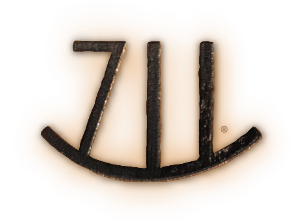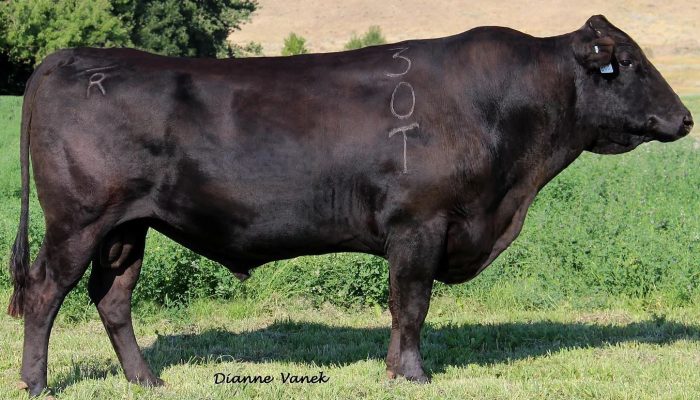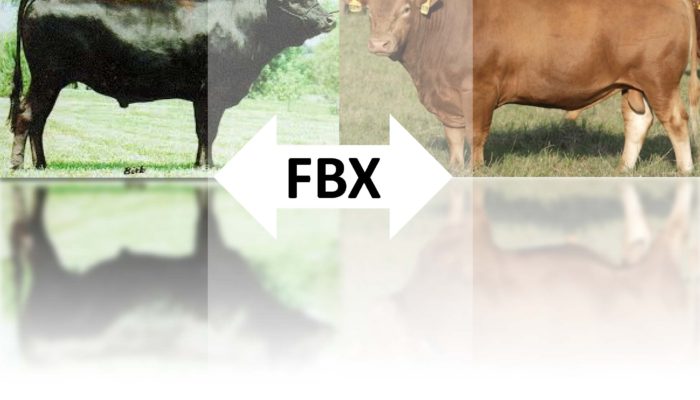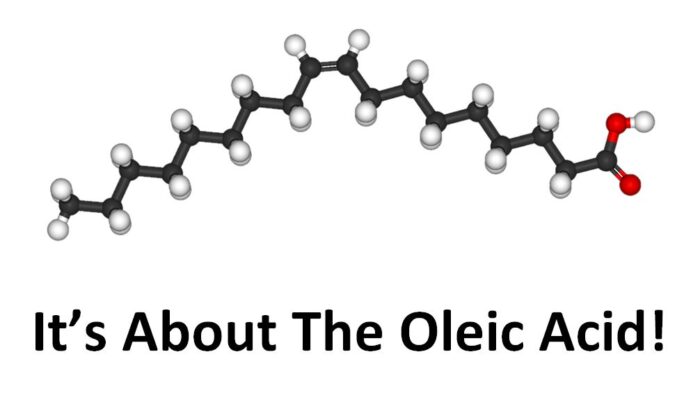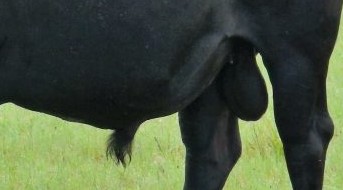How We Used The “TWA Elite Wagyu Performance Test” To Confirm That “Shigeshigetani 30T” Is In Fact An Outstanding Sire While Also Identifying 3 Promising New Young Bulls
It is popular with many Wagyu “seed stock” producers to breed their top female animals to the well-known “foundation sires” to produce offspring that are hoped to be desirable for sale to others as breeding stock. While this is an effective approach for producing animals that other Wagyu breeders desire to buy, it will not lead to improvement of the breed and to the development of animals that are superior to the original foundation animals because such does not constitute “selective breeding” required to select for improved attributes.
Jerry Reeves of Bar R Cattle Company is one of a relatively small number of prominent Wagyu breeders that uses testing of progeny to find second-generation and even third-generation bulls that are better than their foundation bull sires. Jerry has stated for several years now that Shigeshigetani 30T (FB8177) is the best overall “balanced” bull he has ever produced.
The historical evidence to prove the usefulness of 30T has historically come from one source – the Washington State National Wagyu Sire Summaries – which sire ranking information is based upon progeny tests utilizing reference sires to produce a set of EPDs based upon the multiple WSU progeny tests that have been conducted. Such progeny tests have in fact shown that 30T is an outstanding “balanced” Wagyu sire. The fact that 30T has over 330 registered progeny from numerous producers in the American Wagyu Association registry, a huge number for all but the popular “foundation bulls”, is testament to the fact that there are many “believers” in 30T. This is what Bar R Cattle Company / Jerry Reeves has said recently about 30T:
Bar R Shigeshigetani 30T, with 62 progeny in the most recent 2017 WSU National Wagyu Sire Summary, ranked #1 for back fat, #2 for rib eye area, #13 for carcass weight, and #27 for marbling out of 109 sires evaluated. He is in the top 25% of bulls evaluated for all four of these traits. His progeny show excellent carcass traits along with growth and performance. Bar R Shigeshigetani 30T is still considered the most balanced performance and carcass trait bull that Bar R Cattle Company has produced in the past 27 years. He is a large framed Tajima bull and his progeny are docile. We are impressed with his daughters’ dispositions and mothering abilities.
So is the Bar R 30T “sales pitch” to be believed? More than one person has questioned the wisdom of relying on statistical data coming from a single source (in this case the WSU progeny tests). We were eager to find out, because if it is true that 30T is “better than his own sire Shigeshigetani” when measured on a “balanced” basis, as Jerry Reeves has indicated he believes is the case, and if 30T’s sire, Shigeshigetani, is better than its sire Haruki 2, as many believe to be the case, then 30T represents an improved “3rd generation” sire that resulted from selective breeding outside Japan.
The results from the Texas Wagyu Association’s Summer 2017 Elite Wagyu Performance Test, utilizing a Growsafe system to analyze feed efficiency as well as other performance characteristics, provides evidence that 30T is in fact an outstanding sire.
In the TWA performance test, 35 young fullblood black Wagyu bulls were fed the same ration, in the same pen, following a “back-grounding” period to stabilize all of the animals in the same environment, and various attributes were analyzed. Of these 35 bulls, 9 that were consigned to the test by Rocking 711 Ranch were sired by Shigeshigetani 30T. The test was conducted at PX Feeders in Texas. Neither WSU nor Bar R Cattle Company nor Jerry Reeves were involved in any way in the test, so this test was completely independent of the WSU progeny tests that 30T had excelled in.
The results of the TWA performance test showed that the group of 9 30T-sired bulls outperformed the group of 26 non-30T-sired bulls in 4 out of 6 key attributes. By the term “key” we mean that we excluded from the analysis scrotal circumference and hip height, as we deem those two attributes to be unimportant in the Wagyu breed). For the two key attributes for which the 30T-sired group did not outperform the non-30T-sired (ultrasound IMF% and average daily gain), the performance difference was relatively small (-1.9% and -2.5%, respectively). For the 4 attributes for which the 30T-sired group outperformed the non-30T-sired group, the out-performance was often by a wide margin, as shown below:
- Average rump fat thickness was 32.8% better
- Average rib (back) fat thickness was 86.1% better
- Ribeye area to live weight ratio was 17.0% better
- Residual Feed Intake (“RFI”), the best measure of feed efficiency available, was better (a “more minus” number is better, showing a better level of feed efficiency, with zero being “average” and a negative number being “above average”), at minus 0.37 for the 30T-sired group compared to minus 0.12 for the non-30T-sired group.
Adding confidence to our belief that 30T is in fact an outstanding sire with a strong ability to consistently transmit desirable characteristics to his offspring is the fact that out of the 35 fullblood Black Wagyu bulls in the TWA performance test, the 30T-sired offspring ranked highly on an individual basis when the data is viewed on the basis of “the average of all attributes”. This was shown by the fact that when all 35 animals were “ranked” for each attribute measured, and then an “average of the rankings” for each key attribute was calculated on a straight, unweighted basis, the 30T-sired animals held the #2, #3, #4, #5, #6, #7 and #8 spots in the ranked list of 35 animals, and all 9 of the 30T-sired animals were above average.
So participating in the TWA Elite Wagyu Performance Test was helpful to us in solidify our previously-held hope that 30T was in fact a valuable Black Wagyu sire (perhaps even better than his own sire Shigeshigetani himself) that is able to consistently transmit to his progeny outstanding performance characteristics in multiple important attributes.
We were particularly impressed with the consistency of the results from the 9 sons of 30T given the meaningfully different genetic backgrounds from the dam side of this group of 9 animals, as the 9 bull animals we entered in the TWA performance test were sired by one of 4 dams with substantially different genetic backgrounds as shown by the list of the 4 dams below:
- FB6122
- Sire: Fukutsuru-068
- Dam: Takazakura / Kitaguni Jr. / Kikayasu-400 / Yuriko-1 cow
- FB12882
- Sire: Mazda
- Dam: BR Yasufuku 0646 (Yasufuku Jr., Takazakura, Heatherkura (Haruki 2/Suzutani) over BR Ms Itomichi 0602 4647 (Itomichi 0602 over a cow out of Hirashigetayasu J2351/JVP Ms Kikushige 24E)
- FB13515
- Sire: Itozuru Doi TF151 / Itoshigenami TF148 / Hikokura 1/10 cow
- Dam: Michifuku / Fukutsuru-068 / Kikuyasu-400 / JVP Kikuhana 298 cow
- FB20829
- Sire: Itozuru Doi TF151
- Dam: CHR Kitaguni 07K (Kitaguni Jr./Michifuku/Kikuhana/Hikohime 3/2 cow) over a cow sired by Fukutsuru-068/Kikuyasu-400/JVP Chisahime 662 cow
Based upon our increased confidence in 30T and how well these young bulls performed in the TWA Elite Wagyu Performance Test, we are developing 3 of the 9 young 30T-sired bulls for future use in our program:s we have chosen to further develop include:
- 711 Shigetsuru 6555 (FB32455), out of our FB6122 Fukutsuru-068-sired dam, with DNA results of SCD VA and Tenderness 10, and which ranked highly in Ribeye Area / Live Animal Weight Ratio, as well as IMF%
- 711 Shigemazda 6830 (FB28644), out of our FB12882 Mazda-sired dam, with DNA results of SCD AA and Tenderness 10, and which ranked highly in Ribeye Area / Live Animal Weight Ratio (ranked #2 out of all 44 bulls in the test), as well as Rump Fat and Rib Fat, and was above average for RFI. This young bull was the #7 ranked bull out of all 44 young bulls in the test, and #5 ranked out of the list of 35 FBB bulls in the test on the “unweighted average ranking of all key attributes measured” basis.
- 711 Shigezuru 6492 (FB28642), out of our FB20826 Itozuru Doi-sired dam, with DNA results of SCD AA and Tenderness 8, and which ranked highly in ADG (ranked #1 out of all 44 bulls in the test, growing at 3.95 lbs. per day, which ranked higher than all other bulls including even the Red/Black Wagyu bulls), as well as Rump Fat and Rib Fat, as well as Ribeye Area / Live Animal Weight Ratio, as well as IMF. This young bull was the #2 ranked bull out of all 44 young bulls in the test, and #2 ranked out of the list of 35 FBB bulls in the test on the “unweighted average ranking of all key attributes measured” basis.
Participating in the TWA Elite Wagyu Performance Test provided us with the information upon which to base a decision to perform further testing on these young bulls to see how they transmit characteristics to their offspring. Could one of these highly ranked young sons of 30T be even better than 30T? Only time and additional testing in the form of progeny testing will provide that answer, but we have the evidence necessary to be hopeful. This additional testing will take several years. But in the meantime, the results from the TWA Elite Performance Test provide us with sufficient confidence to use these 3 bulls in our breeding program; a confidence based upon solid performance data on the actual bull, which is much superior to making decisions based simply on pedigrees, “hoping” that the animal inherited the desired genetics from its sire and dam.
We are looking forward to participating in future TWA Elite Wagyu Performance Tests to start the process of proving other young animals.
CLICK HERE to view a PDF file showing the details of the comparison of the Shigeshigetani 30T-sired young bulls to the non-30T-sired young Fullblood Black bulls from the TWA 2017 Elite Wagyu Performance Test.
